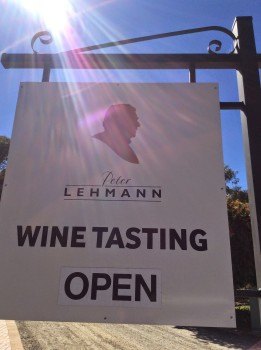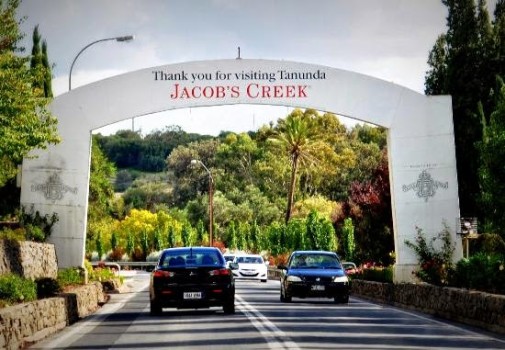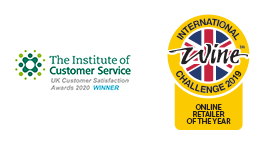These days it seems everyone talks about the small estates that produce limited releases of quirky and micro cuvées, whacky varietals and so on. But how about giving the larger wineries and famous big names a little bit of praise, too? They may be all-controlling taking the majority of the market share with their big blends, but these well-priced wines are often what the general tourist and wine drinker wants. Also, remember that these pioneering wineries all started from scratch and formed the foundation upon which South Australian wine still stands today.
I find the big names rather interesting from a marketing point of view. And you have to admire their ability to make very good, well-priced large blends … and to be honest I want to get the T-shirt and say I’ve visited them! So today I decided I would put on the tourist cap/bumbag/sandals and socks and visit the big, well-known wineries to see for myself.
First up was Wolf Blass in the northern part of the Barossa, a couple of clicks outside of Nurioopta. The huge winery was found easily with more signs than you could shake a stick out and the cellar door access is directly off the motorway with its own exit! Easy peasy.
You are greeted by the pristinely clean car park and the smooth, immaculate circular visitor centre surrounded by the usual over-watered, bright-green lawns and, of course, the giant bronze eagle so synonymous with the Wolf Blass labels.

Like most of the big Aussie winery names, it was all started by one person … in this case the German Wolfgang Blass. Back in 1966, he recognised the potential of the wines that could be made here in the Barossa. He famously said his style of red and white wines would “make strong women weak and weak men strong” he also stated “no table wine over 15% vol should ever get any medal. Anywhere in the world, ever”, so perhaps that’s why all the Wolf Blass wines are 14.9% vol…??!
The cellar door is bright, immaculate, airy and the dominated by the enormous trophy cabinet (it’s like the Bernabeu stadium in Madrid!) The tasting bench is sleek as are the staff and the glasses and a tasting list are slid under your nose without you even noticing.
I tasted the White Label Piccadilly Valley (Adelaide Hills) Chardonnay and the Eden Valley Riesling which were cold, fresh and fine. The Adelaide Hills 2012 Cabernet at $49 a bottle seemed a little steep for the money, but it tasted ok and the hundred-odd other visitors seemed to love the wines. Plenty of mixed cases of wine were being sold, along with branded hats, t-shirts and, of course, the branded bum bag.
Before leaving I decided to try the Brown Label Classic Shiraz 2012 … apparently a re-release of an original label from the 1970’s. With its $50 price tag it was the most expensive free wine on offer for tasting, very oaky and mocha dominant … but I do like the label.
Next I headed back to Tanunda and for the Peter Lehmann Estate. This property has was purchased by Casella back in December for a tidy sum of AUD$57 million. In true Casella fashion they have ramped up the production for their first vintage in charge and doubled the fruit processed at the Lehman cellar compared to the previous vintage. They’re now challenging TWE for the position of Australia’s second largest wine company.

The cellar door has a nice feel and staff are super-friendly with good wine knowledge. I started with their cold fresh Fino sherry; great at $18. The Barossa Verdejo is a good low-alcohol option and the 2009 Semillon is light, zesty and aromatic. For the reds I enjoyed the silky and fresh 2011 Mentor Cabernet. The Ruediger 2013 Cabernet is bigger and bolder and although the 2010 Stonewell Shiraz may be $100 it’s ripe, earthy and chocolaty with dark cherry fruit and a peppery finish.
The gardens are really lovely, the sun was shining and my stomach was saying lunch. I ordered a platter that came with cured meats, nuts, local cheeses, bread crackers and a glass of red. I thoroughly enjoyed the lunch out on the relaxed terrace overlooking the lawns. Nice job, Mr Lehmann, I hope Casella can continue your hard work and passion.

Feeling revitalised I made my way south through Tanunda to the last visit of the day, Jacobs Creek. Everyone knows this brand and I was keen to see what their cellar door was like. Jacobs Creek’s first release was a 1973 vintage ‘Claret’ wine back in 1976. I even have a 1983 bottle of Jacobs Creek ‘Claret’ in my cellar back in Bordeaux and have often strangely looked at it thinking if it might miraculously be still good to drink.
The entrance to the ‘visitor centre’ is unmistakable with its grand landscaped entrance where a sign informs you that the wine tasting is 800m down the drive. As you meander down the driveway though the pruned and strategically placed gum trees and gardens you finally arrive at the new cellar door; sorry; visitor centre! They have everything here for a full day without having to leave the sprawling estate, even bike trails.

I wanted to buy a bottle of the blend they are so famous for, to taste blind with winemaker mates later on. It was $10. They asked me if I was in the trade to which I replied yes without attracting attention and they gave me 40% off! I am not going to argue with that!
Later on no one got the wine in the blind tasting. It didn’t win but with the Bbq food the bottle ended empty without complaint! Maybe I will open that 83′?!
All these big names had changed the name ‘cellar door’ to ‘visitor centre’ but everywhere we went people were enjoying themselves and confident with the wines. I guess they were comforted by the array of silverware as they handed over their dollars before heading out into the sunshine to enjoy a cheese platter in the manicured gardens. And why not? I did. But I didn’t buy a branded bum bag.






Nice report on some of the big winemakers in Oz.
I am wondering if you have any views on the uniformity they achieve vintage after vintage. In particular, I’m interested in what place you think grape concentrate additives have in modern wine making.
I’ve read that Mega Purple is used almost universally in budget wines. So, my question is really whether or not you use it in any of your lower priced options?
I am a big fan of XV by the way.
Thanks